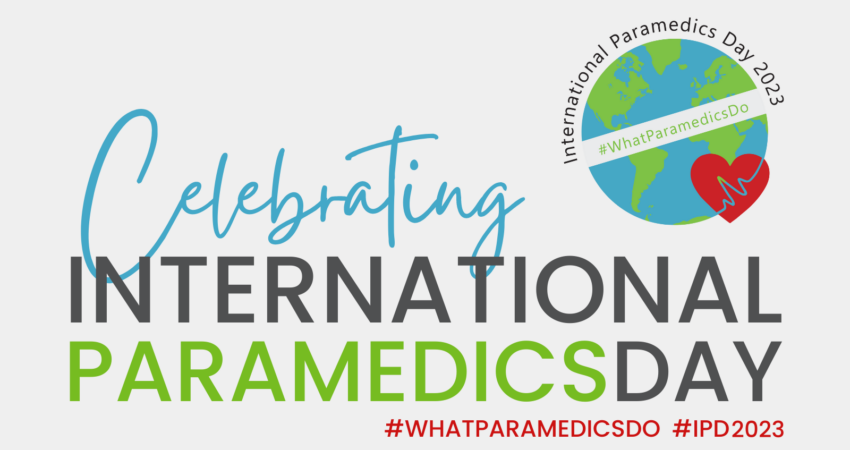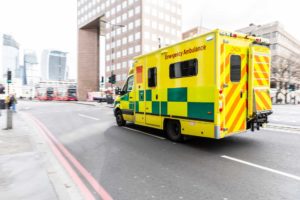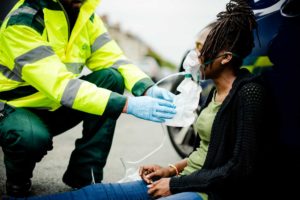
Different routes for becoming a Paramedic
A Paramedic is a highly skilled individual who must be able to make critical treatment decisions autonomously whilst dealing with traumatic and stressful situations. As such, the training involved for becoming a Paramedic will take a lot of time, education, practice, and examination. Through the development of the role, there are now multiple routes for becoming a Paramedic.
In this article, we will cover some of the more common routes, and what can be seen as the pro’s and con’s to them:
University
 The University route has become a standard route into the Paramedic role. Before, Ambulance Services would train their staff to varying degrees of clinical grade. Various Services often have varying names for clinical levels, but staff would work their way up as and when positions and posts became available, often being put through in-house training.
The University route has become a standard route into the Paramedic role. Before, Ambulance Services would train their staff to varying degrees of clinical grade. Various Services often have varying names for clinical levels, but staff would work their way up as and when positions and posts became available, often being put through in-house training.
Now, individuals can apply directly to Universities to do a 3-year Paramedic Science degree. Over the 3-year period, the student will be put through all of the necessary education and training, while completing placements with Paramedic Mentors on the road, and various other pre-hospital and hospital placements. The student will be required to do examinations, Objective Structured Clinical Examinations (better known as OSCE’s), and a various other tests over the 3-years to show their abilities and competence. On successful completion, you can become a registered Paramedic, and can apply as a Newly Qualified Paramedic (or NQP) within various Ambulance Trusts.
Pros:
- You are on a dedicated course which will put you through all of the necessary training required to become a Paramedic
- You gain a degree at the end which will be recognised by many organisations across the globe, and allows you the option for further study of a masters degree
- It is one of the quicker routes to becoming a Paramedic as once you complete the 3-years, you’re done
- You get to experience the University lifestyle and will create many friendships and experiences over the time
- You will have support from the University whenever you need it, and there are multiple seminars and classes outside of your course you can attend to help with various aspects, such as academic writing
- Going through the academic route will help with your overall academic skills and understanding, which will help you in the future if you want to look at advancing your career
Cons:
- You will have to get student loans to complete the course as they are expensive, and if you don’t get into a University near where you live, you will also have to look at the costs of travel and accommodation, potentially having to take out further maintenance loans (discuss with the University or look to see if there are any grants that you can apply for)
- The 3-years can be very intense and it will take up a lot of your time. Any commitments or ongoing activities in your life may likely be affected (you can discuss with the University and see what options may be available to assist. It’s always best to get in touch and discuss with them)
- You will have to get used to academic writing and presenting. Even in the other routes to becoming a Paramedic, you will have to develop this, but in University it will be more often (you can discuss with the University, which will point you in the direction of support, such as academic writing classes)
- You have to meet the Universities required qualifications, and you will be applying and competing against numerous other candidates (if you don’t have the necessary qualifications, speak to the University about what you do have. They will often consider what experiences you have and other qualifications if they are suitable. If not, there are many College courses available which you can do to get the required qualifications)
Ambulance Service Training
 You can work your way up through the different Ambulance Service grades to become a Paramedic. Although each Ambulance Service uses some variations in clinical grade titles and role functions, the typical pathway for progression would look like this:
You can work your way up through the different Ambulance Service grades to become a Paramedic. Although each Ambulance Service uses some variations in clinical grade titles and role functions, the typical pathway for progression would look like this:
Patient Transport Service (PTS) – Emergency Care Assistant (ECA) – Emergency Medical Technician (EMT) – Paramedic
Patient Transport looks at non-emergency transport, where PTS staff transfer patients from home to hospital, and vice versa. PTS is an excellent entry route into the Ambulance Service as you will have basic medical training, patient handling training, and you will be introduced to the workings of the Ambulance Service. It also offers a great opportunity to develop key interpersonal and communication skills.
An ECA works on the emergency care side of things. ECA’s may be partnered with Paramedics or Technicians, offering emergency response, or they may be paired together, offering back up and transport to single responder vehicles. Each Ambulance Trust has variations of the role, responsibilities, and their duties.
An EMT typically works with ECA’s or Paramedics, and in some regions may also be solo responders. EMT’s have additional training above that of an ECA and are also able to administer some medications. Typically, ECA staff can apply for EMT roles as part of their progression, however, you may be able to directly apply for an EMT depending on your previous background, training, and experiences. EMT’s have the option of progressing to Paramedic if courses become available and they successfully apply.
Pros:
- Working within an Ambulance Service, you will quickly become aware of the practices and the work environment. This will give you good insight into what is needed in order to progress
- You will also start developing your patient communication and medical skills early on through the interactions and training you have within service
- Doing this route means you get paid to work, and any courses you attend or go through will also be paid, meaning you can continue to live normally while not acquiring lots of University debt
- You will work with various staff of clinical grades, meaning you can question them on topics and build further knowledge
- You really get to know the role and whether it is one you wish to pursue
Cons:
- The progression process will likely happen over a long period of time. Staff will often have to be in a certain role for a set amount of time before being able to progress, and then it will be up to whether the Ambulance Service is running any progression courses, if they do at all
- It can be very stressful having to go through courses due to having to still do shift work whilst attending lectures, studying, producing coursework, and practicing for exams
- Before applying you will likely need a number of pre-requisites which may be costly to obtain, such as a C1 driving license (some service may offer training a part of the induction process, so always worth checking)
Private Medical Education
 Across Britain and the globe, there is a huge array of Private Medical Providers and Private Medical Educators offering courses for individuals to be able to train up to various levels of Medical Responder. They typically provide the basic first aid training as required by employers, but specialist trainers can offer more advanced courses such as First Person On Scene (FPOS) or First Response Emergency Care (FREC), various training course titles exist. A FREC level 4 can sometimes be compared to the Ambulance clinical grades between an ECA and an EMT. FPOS or FREC staff are often employed within the Private Medical Provider industry where they are used for event cover, private ambulance work, sports gatherings, and a whole host of other work, depending on the company.
Across Britain and the globe, there is a huge array of Private Medical Providers and Private Medical Educators offering courses for individuals to be able to train up to various levels of Medical Responder. They typically provide the basic first aid training as required by employers, but specialist trainers can offer more advanced courses such as First Person On Scene (FPOS) or First Response Emergency Care (FREC), various training course titles exist. A FREC level 4 can sometimes be compared to the Ambulance clinical grades between an ECA and an EMT. FPOS or FREC staff are often employed within the Private Medical Provider industry where they are used for event cover, private ambulance work, sports gatherings, and a whole host of other work, depending on the company.
There are special providers who can train individuals up to the level of Paramedic, though the majority will usually follow the FREC or FPOS levels. These provides may only do it as part of an ongoing development within their company.
Pros:
- It can give you quick access into training
- You don’t have to go through an interview process or compete against others as you are paying for your space
- If you are interested in working the Private industry, this will give you some insight and contacts moving forward
- Specific training will be provided to you as per the course aims and outcomes
Cons:
- Unless an employer is putting you through the course, it will be expensive and if you fail, you will have to pay again to retake the course
- Moving up the various levels, you will have to get a Private Medical employer so that you are able to complete the experiential training and hours
- The qualifications you gain may not be easily recognisable within different countries
- If you do work for a Private Medical Provider, it will be at their discretion whether they put you through additional training or not
Summary
This article covered a few of the more popular routes into Ambulance Service and Pre-Hospital roles, but there are still many other ways that individuals have gone through the process to become Paramedics, such as apprentice programmes within Ambulance Services, through training in the military, etc.
One size doesn’t fit all, and some individuals may use a combination of routes to end in the Paramedic profession. In all cases, individuals will have to study hard, practice and develop their care, go through various examinations, have training from various mentors, and more. All of this has to allow the Paramedic to be able to act correctly and make the difference when a medical or traumatic moment in someone’s life arises.




